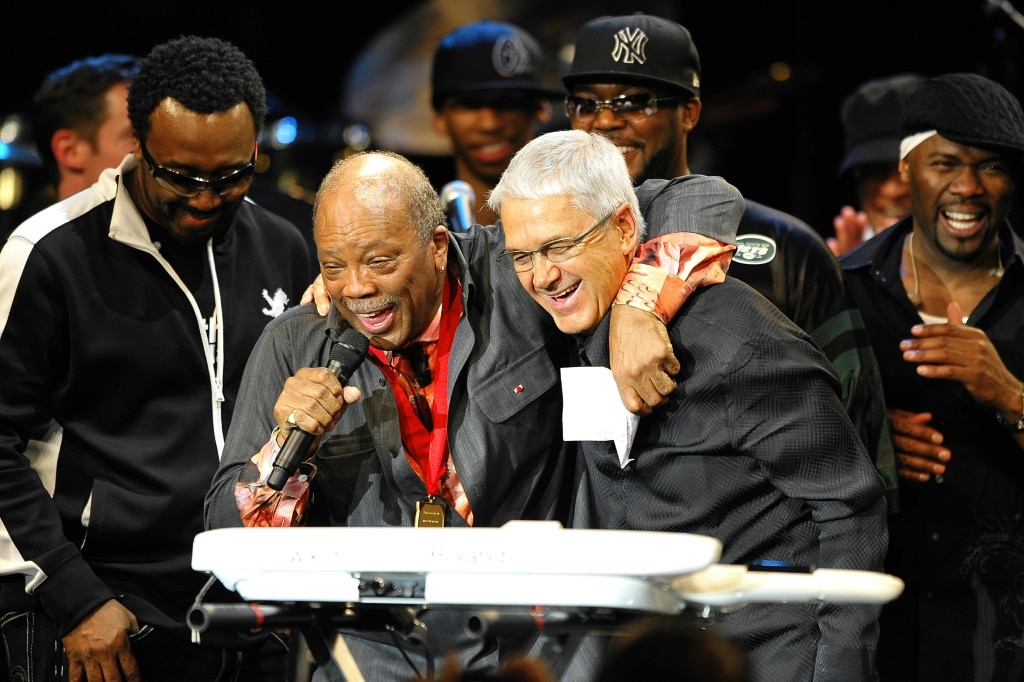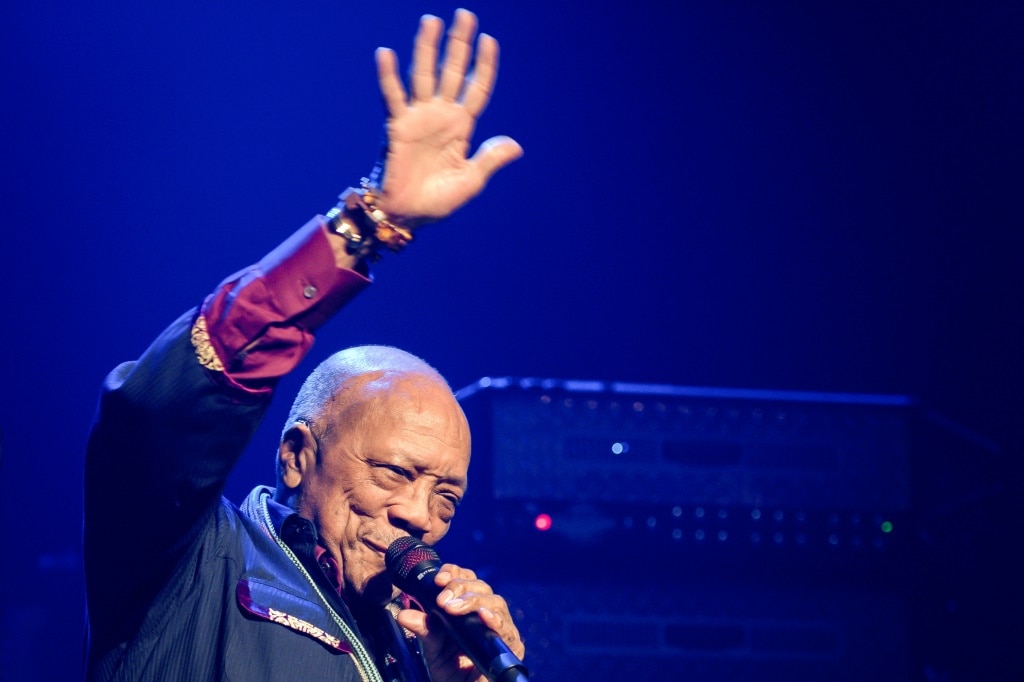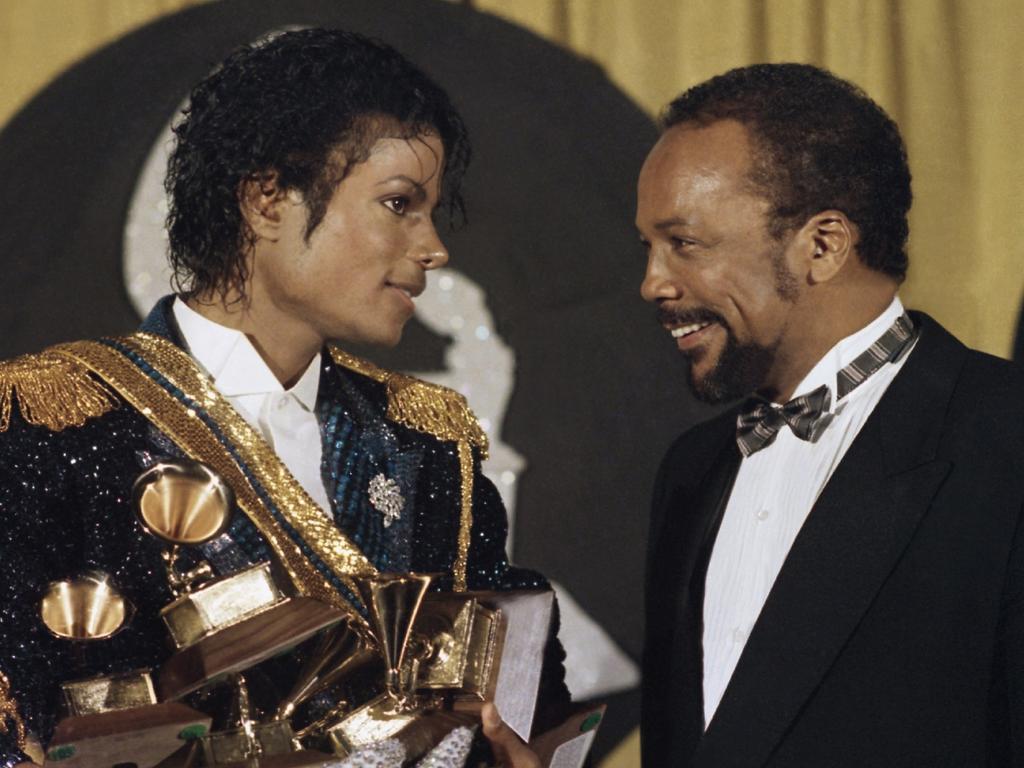How a brush with legendary producer Quincy Jones changed my life
Quincy Jones looked me in the eye. ‘Look into your roots, man,’ he said. The Australian’s Jasper Leak writes a very personal tribute to the legendary music producer in the wake of his death this week at 91.

Quincy Jones looked me in the eye. “Look into your roots, man,” he said.
This was 2015.
I had just moved to Los Angeles and somehow I’d wound up in the orbit of the most influential musical figure of our time: Quincy Jones.
We were at EastWest Studios and Jones was executive producing a record for a friend of mine, Justin Kauflin.
Jones was in his 80s, energetic and deeply engaged with those around him.
Born in 1933 in Chicago, he was directly descended from slaves, giving him a huge curiosity about genealogy. He wanted to know about my racial background.
“You got some gumbo goin’ on,” he said. “You look like a Richie.”
Gumbo, I’d learned on visits to New Orleans, is a bit of everything: rice, prawns, chicken. And by “a Richie”, he meant I reminded him of the children of Lionel Richie, another musical titan.
I told him my father, Bill, was Australian and my mother, Astrid, was German, but that half of my mother’s family story was a mystery. Mum was born in Germany after World War II, but grew up in children’s homes and never found out who her biological father was.
So I looked into my roots. I bought my mother a DNA kit for her next birthday – and it came back with the results that her genes were 75 per cent western European with 25 per cent west African, which suggests her father was half west African. Our family’s theory is that maybe her father was ex-American military, in Germany after the war.
The next time I met Jones, he remembered the conversation and asked me about it again. I think he liked the fact I’d listened to him – and he was right about the gumbo. For me, that conversation points to one of the reasons Quincy Jones made such an enormous impact in his 91 years. He was a giant of the industry. But he was generous and humble. He wanted to know more about the piano-player’s Australian friend.
In the noughties I’d moved from Sydney to New York as a jazz-obsessed 20-something with dreams of being where the magic happened. I worked as a touring musician with Sia, Tegan and Sara and other acts. I also waited plenty of tables, and in 2017 I got a call from another Australian working in the US – my friend Alan Hicks.
He’d already spent a year working as a co-director on a documentary about Quincy with daughter Rashida Jones. They needed a music consultant and supervisor. The idea was to score the documentary using music only from Jones’s pre-existing catalogue. I loved the idea, but when it became a reality my immediate response was sheer terror. Who was I to take on this responsibility?
I knew the only way I’d get comfortable with it was to listen to Jones’s discography – the whole thing. I worked my way through in chronological order, working roughly eight hours a day, eventually making my way to the end of what was a 3000-song list, across roughly 300 albums. It was the best “job” I’ve ever had and an incredible education.
I set up a spreadsheet where I made the discography searchable, adding descriptors for mood, and release information such as artist, album, instrumentation, decade etc. The idea here was that when we moved into the editing process, Al or Rashida could say “we need something introspective and bluesy from the 50s, recorded by a small ensemble” and if something didn’t pop into my head, I could go to the spreadsheet and everything that didn’t fit the criteria would be filtered out.
With the exception of Jones himself, I’m probably the only person who’s listened to his full discography. So I was learning at the feet of the master. I knew who he was, of course – but I became overwhelmed at the volume of work that he’d produced in his lifetime. Not just the volume, but how ambitious a lot of it was too. And the genres he spanned.
There were film scores with full orchestration, records that were quite experimental. He did a gospel album with Little Richard.
Michael Jackson’s Thriller is a great example of Jones’s ambition.
It was a lot more than “hey, let’s write a great song and record it in a studio together with a great band”. Artistically it was really ambitious.
The music video was the longest music video ever at that time. Quincy had the vision: they brought in director John Landis, who had directed The Blues Brothers movie, and choreographer Michael Peters.
Jones achieved so much in his lifetime that you can draw inspiration from him but it would be impossible to try to model your career after his. As Richie said: “Don’t try to do what he’s done. Cause you get your ass killed.”
While this was going on, my father, Bill, died.
I spent a lot of time thinking about Dad during my work on the documentary. No one would have got a bigger kick out of me hanging with Jones than him.
When Jones died at the weekend, tributes flowed from around the world. I hope they are some comfort to Rashida and the family – for a man whose music changed the world and for a father they loved so much.






To join the conversation, please log in. Don't have an account? Register
Join the conversation, you are commenting as Logout